The Importance of Brand Identity in Interior Design
Here’s how to infuse your brand identity into commercial spaces.
Have you ever walked into an apartment building lobby and immediately felt a sense of comfort and belonging? Or perhaps you’ve entered a space that made you want to leave as quickly as possible. These reactions are not solely based on the colors of the walls. Rather, it has more to do with the overall branding.
Your brand is so much more than a color scheme and logo. It’s about creating an experience for your tenants that goes beyond aesthetics. It’s designing spaces that reflect your brand’s values, personality, and overall vibe—something we call ‘experiential design.’
SouthPark Interiors is a leader in commercial experiential design for multi-tenant housing, helping universities and property owners establish their brand identity and create unique experiences for their tenants. Let’s take a closer look at the role branding plays in interior design.
In this article, we’ll cover:
Understanding Brand Identity in Student Housing and Multi-Family Spaces
Brand identity refers to the qualities, values, and characteristics that distinguish a brand from its competitors. In the context of student or multi-family housing, brand identity plays a crucial role in attracting and retaining tenants. A strong brand promotes trust, credibility, and loyalty among those who seek a place to call home.
Visual aesthetics and property design contribute to your brand identity. A modern facility with well-designed common areas, traffic flow, and amenities can create an instant connection with potential tenants. It shows them how the property can enhance their quality of life, especially if your branding remains consistent throughout the property and not just the front desk.
Student housing and multi-family properties serve unique audiences, but each type offers myriad opportunities for branding. Among them are:
- Use of colors and textures in common spaces, hallways, stairwells, and within each unit
- Lighting to promote safety, wellness, and mood enhancement
- Color schemes that contribute to emotional reactions (e.g., calmness, energy, focus) and well-being
- Artwork to create “finished” spaces and increase perceptions of value
Each of these elements works together to develop a cohesive brand throughout the property, one that residents will notice and appreciate.
Case Study 1: Student Housing
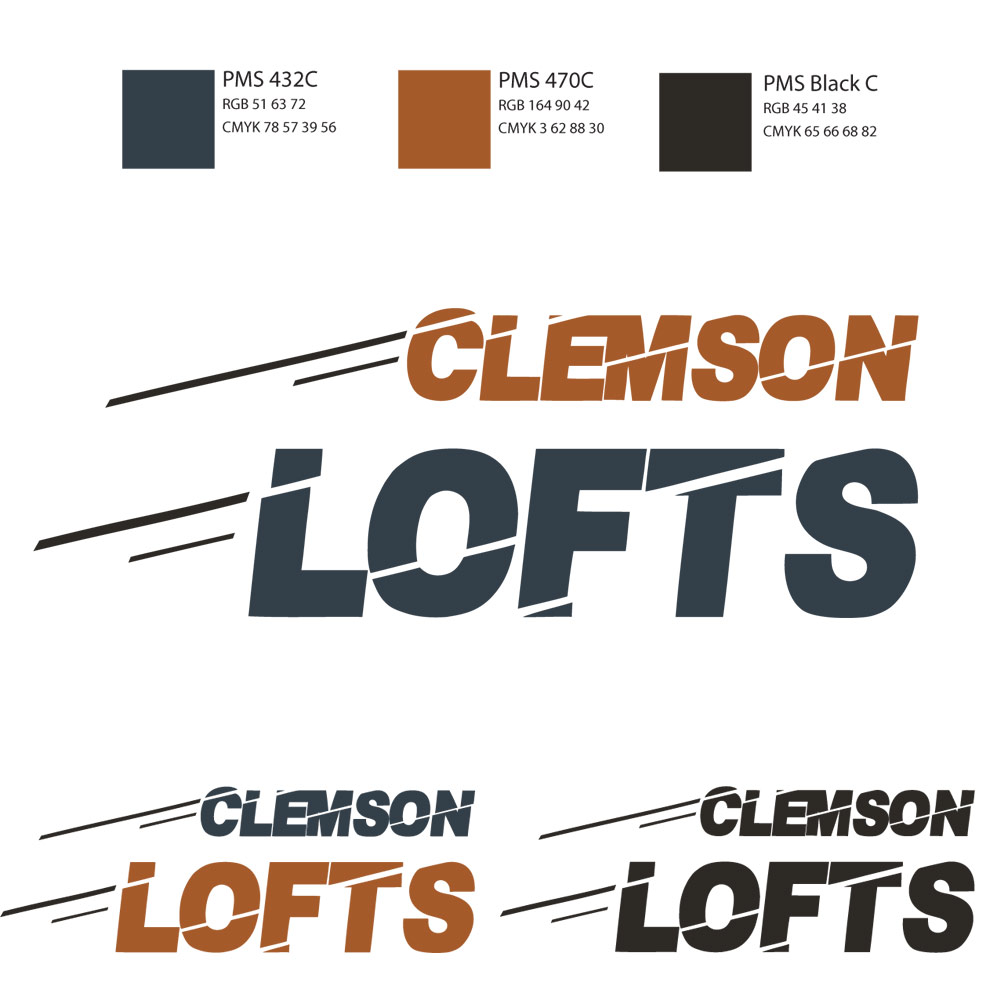
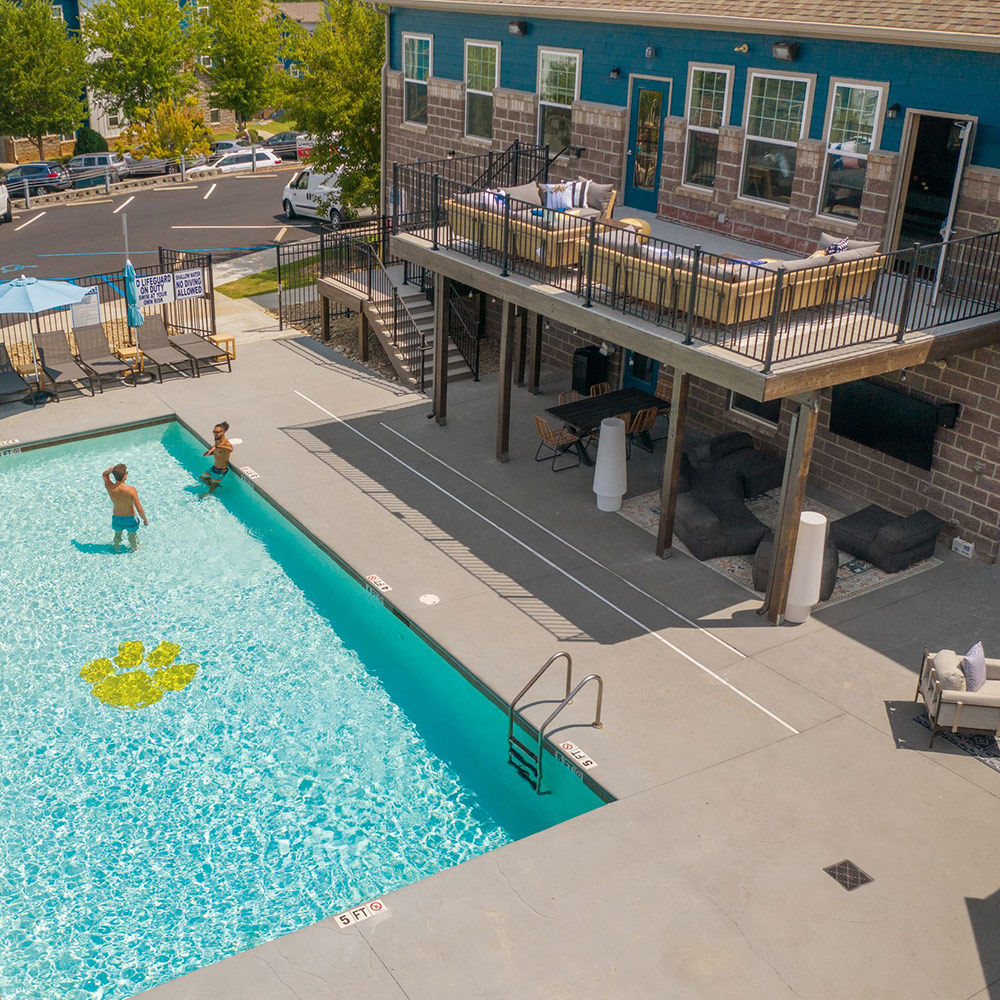
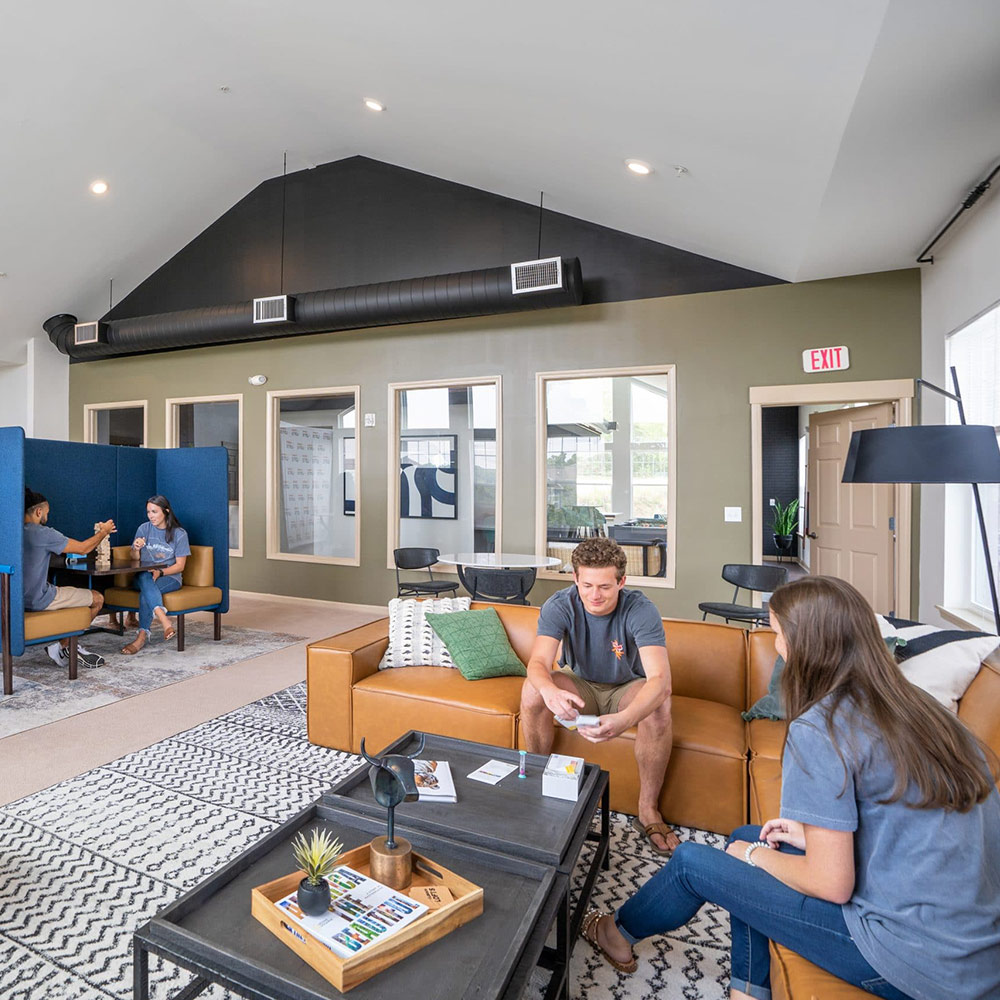
Case Study 2: Multi-Family Residential Development
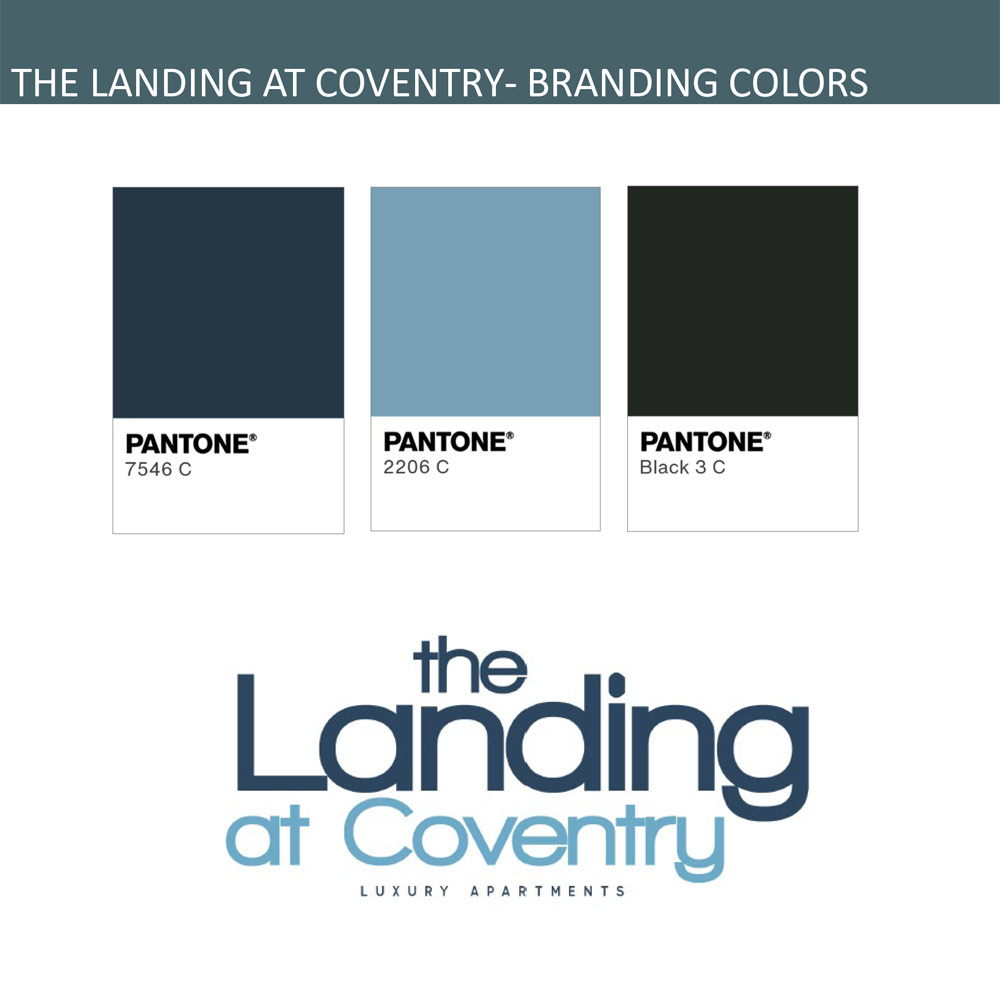
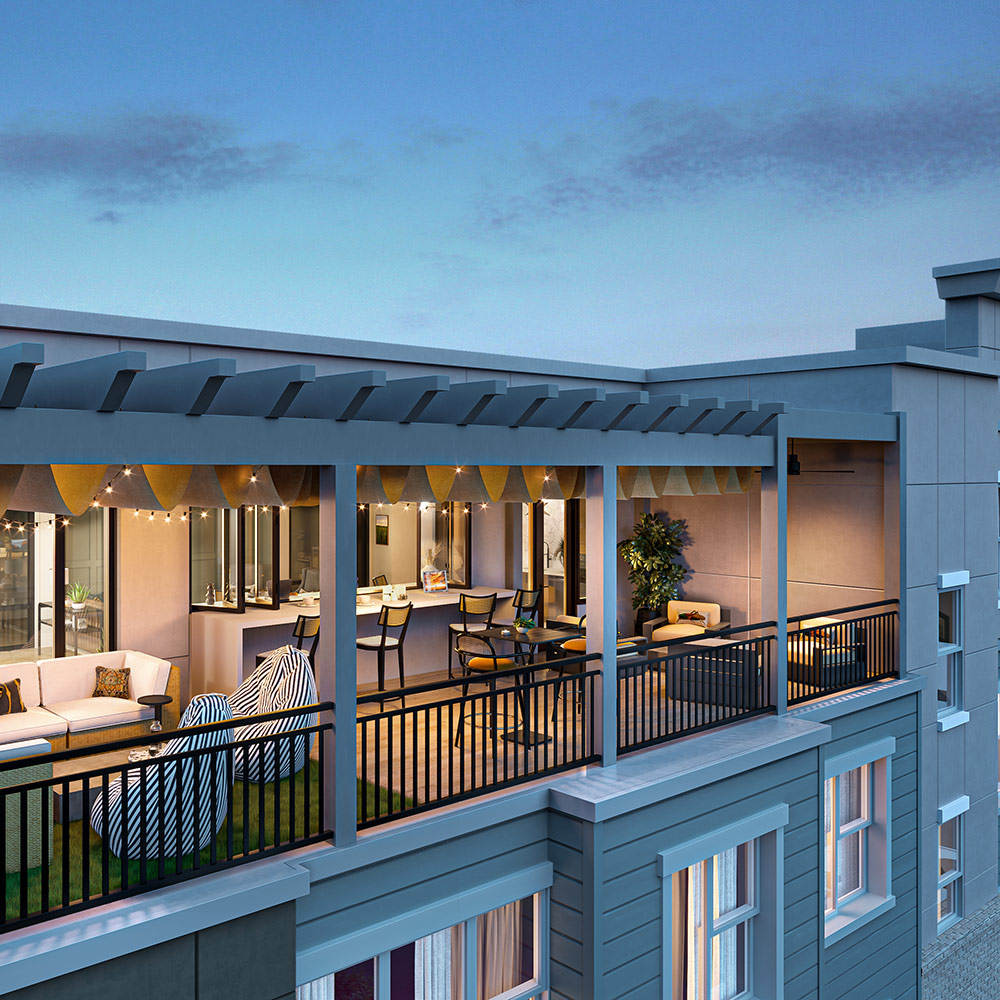
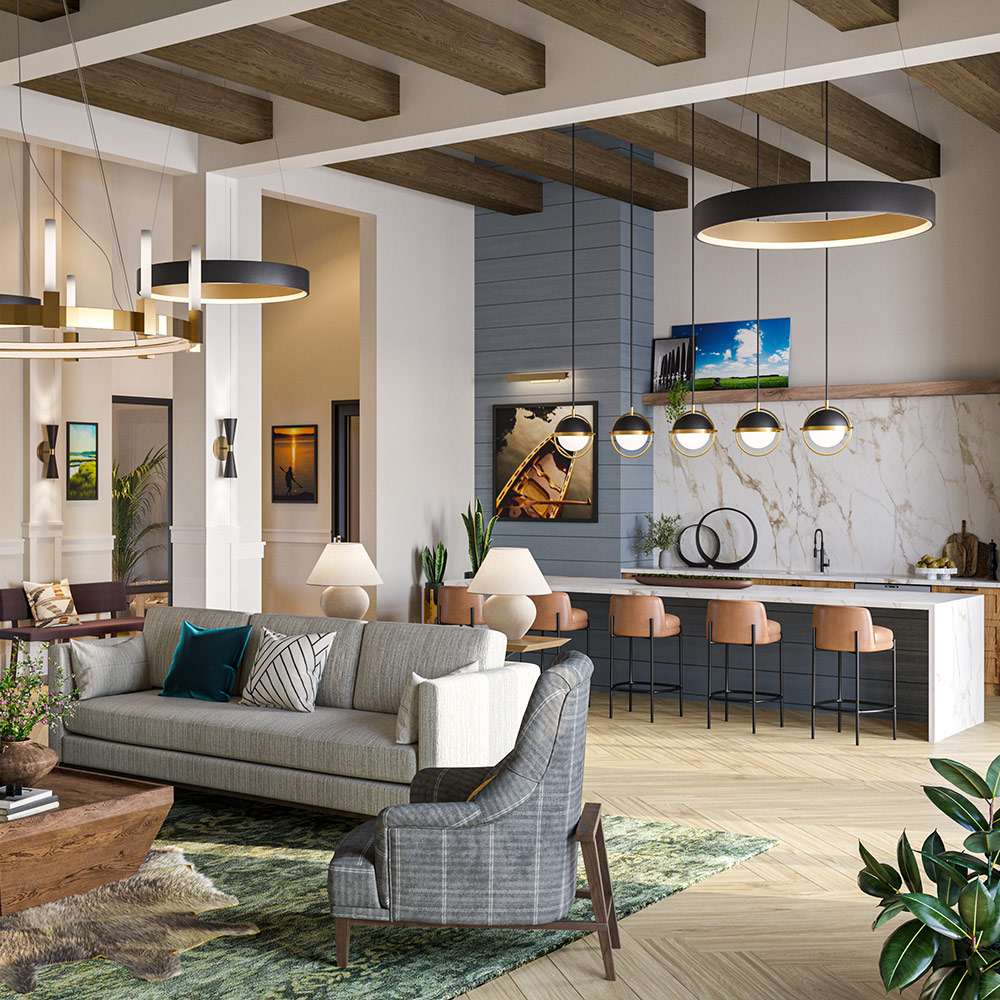
The Landing at Coventry, a new multi-family build, gave SouthPark Interiors a blank slate with a purpose. Being involved in the overall branding package, we integrated the logo and colors with the interior design. To create an inviting environment, we chose curved light fixtures, bar stools, and furniture that feels warm and personal. Shades of white are dominant here, but they’re balanced by accent walls and wood textures from floor to ceiling. String lights on upper decks soften the mood, making it a great nighttime hangout. Textures and colors in the common areas echo throughout the rest of the building for a cohesive look and feel.
The Role of Interior Design in Branding
The way you design your spaces can communicate your brand’s values, personality, and overall aesthetic to potential tenants, helping you attract prospects who are most likely to sign a lease. For example, if your building has invested in eco-conscious living, incorporating materials like reclaimed wood or bamboo can instantly communicate these values to prospects.
Similarly, using bold or bright colors can give off a youthful vibe, while colors like black and gold can add a touch of luxury and sophistication.
Not only does thoughtful interior design tell your commercial housing brand’s story, but it also creates an emotional connection with your audience. People are drawn to spaces that evoke certain feelings or memories. By designing spaces that reflect the lifestyle and aspirations of your target audience, you create a sense of familiarity and belonging—both of which go a long way in retaining tenants.
Utilizing Graphics and Visual Elements
Visuals have the unique ability to convey emotions and tell stories more effectively than words alone. By using imagery that evokes certain feelings or memories associated with your brand, you can create a deeper connection with your tenants.
To do this, we consider the total visual package, including:
- Artwork
- Colors
- Textures (e.g., furniture, window treatments, carpets/rugs)
- White space
Don’t underestimate the power of visuals—they have the ability to captivate audiences like no other element.
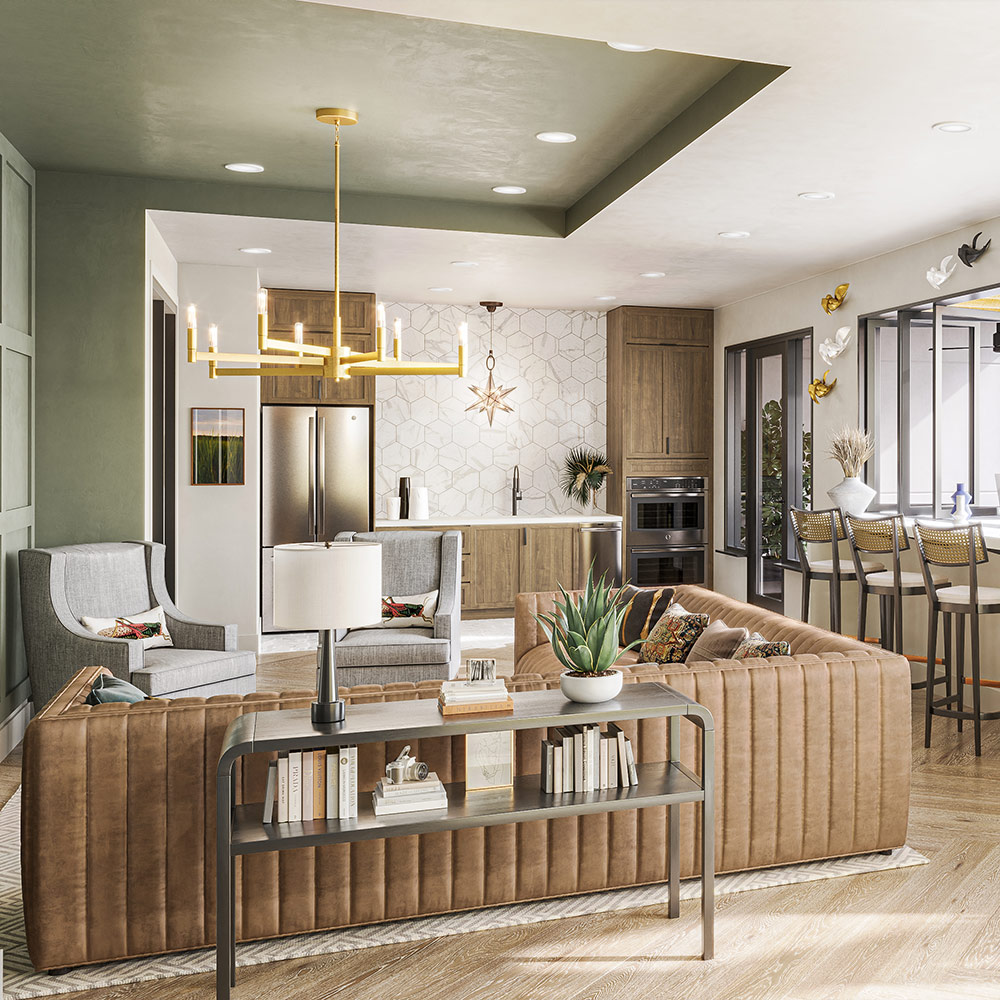
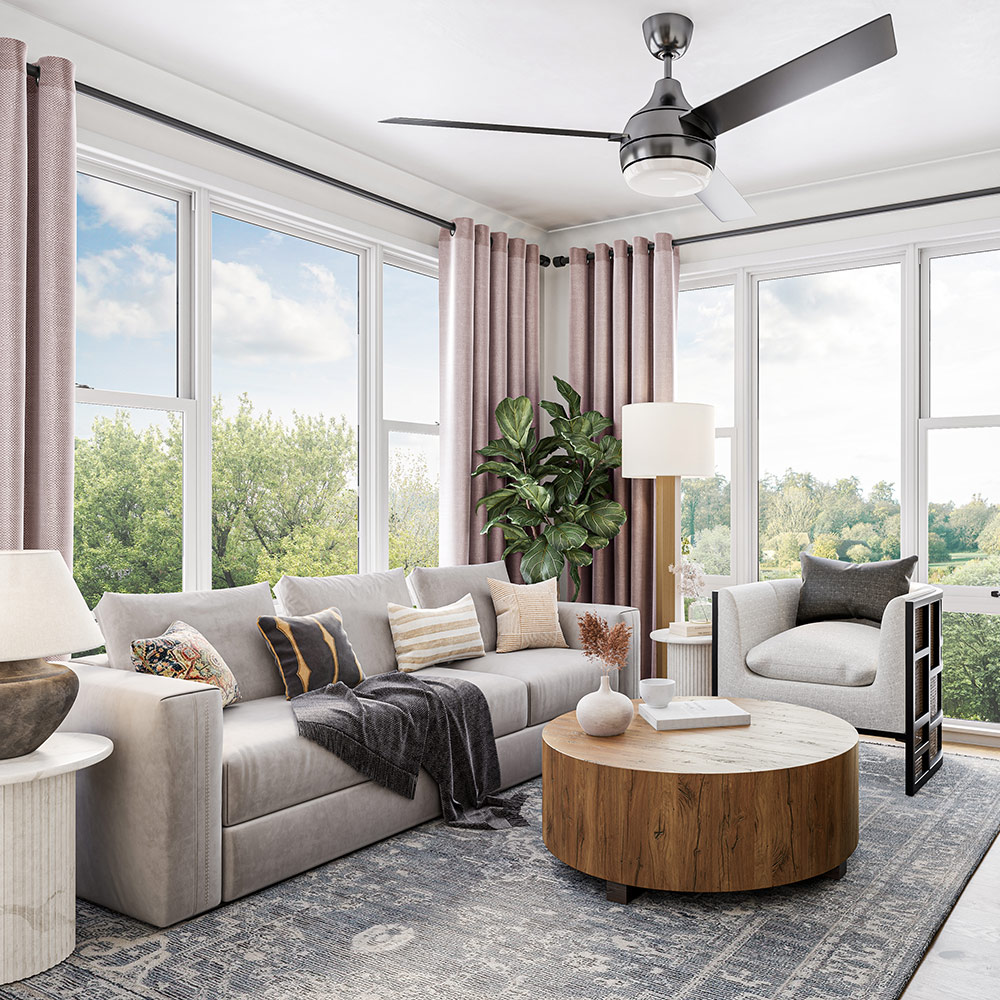
Lighting and Ambiance for Branding
Lighting goes beyond illumination. While it does provide safety and security, it can also enhance a space’s overall appeal and ambiance.
To incorporate lighting in brand design, we pay attention to lighting fixtures, brightness, color and warmth, mood, and placement (including window placement for natural light) to enhance a commercial housing brand’s identity.
Establishing Your Brand with SouthPark Interiors
Using branding in interior design creates a visually compelling way for commercial developers to stand out and create spaces where people want to live.
Learn more about branding’s role in design by scheduling a consultation with our team.
